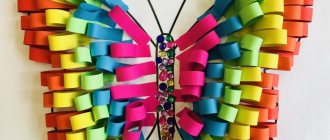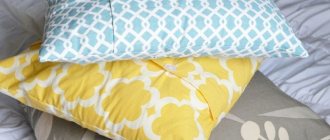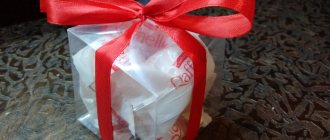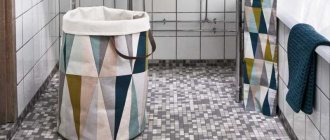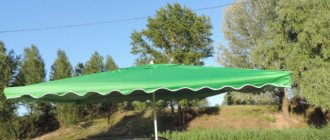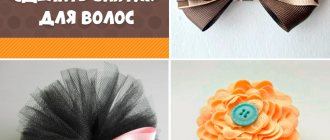Types of products
Before purchasing, it is better to familiarize yourself with the types of products in order to buy not only a stylish, but also an easy-to-store accessory that can protect your glasses from various defects. The covers are:
- Tough. They are made using gold or silver, wood or aluminum, metal or plastic. To prevent the inside of the eyeglass case from looking rough and damaging the contents, it is lined with soft material. This option is ideal for forgetful, energetic people who often hit the road, because it will withstand falls, crushes in transport and other unpleasant situations.
- Soft. They are made from natural or artificial leather, various textiles or microfiber. Such cases are compact, do not take up much space in a bag or briefcase, and are suitable for storing sunglasses.
- Foldable. Such cases are the most compact and, therefore, convenient. They are usually made of thick belt leather, which makes them durable products that do not lose their original appearance even after several years.
Eyeglass cases are also divided into men's, women's, and children's. They all differ in color, size, design. Products for women are lighter in weight and have soft, smooth lines, while men's models often have a more angular, rectangular shape. Nowadays, most eyeglass cases are produced in a unisex style with standard sizes depending on the material - on average from 16 x 6 cm to 18 x 8 cm.
Interestingly, there are no fewer children's models than adults. Their main differences are: compactness (they measure approximately 15 x 7 cm) and bright, rich colors. They can also be of various shapes, for example, in the form of a car, a rocket, or even a doll.
Hard Soft
Folding
Female
Children's
Male
Unisex
For the discreet and stylish
This leather case in classic black color looks very cool.
Even novice needlewomen can make it in a maximum of one hour using step-by-step photos. Thanks to its universal color, it will suit any style and can be used by both women and men. The case will require the following materials:
- a piece of thick black leather;
- nylon or reinforced thread in color;
- scissors;
- lighter or matches.
To begin with, we cut out a rectangle from leather of such a size that, folded in half, it corresponds to the size of the glasses and still leaves a small margin for ease of use.
Stepping back a little from the edges, use an awl to make holes at equal intervals.
Then we thread a needle and thread into the holes, connecting the edges with stitches.
We leave the upper edge open, secure the end of the thread with a knot, cut it off and melt the tail with a lighter so that it does not fray.
All is ready!
Possible materials of manufacture
The materials from which eyeglass cases are made vary in strength, durability, and degree of protection. Leather is often used - products made from it look stylish, but are expensive. Cases made of this material can protect the contents from moisture, dust or scratches. If there is a strong impact or crushing, a leather case for glasses, whether made by hand or produced in a factory, will be damaged. The exception is if a metal or any other rigid frame covered with the described material is used. In this case, protection for the optical device is provided. The disadvantage of such products is the high price, it can vary between 900-5000 rubles.
Wooden cases are exclusive options. Craftsmen make their own cases for glasses from expensive, rare species (bamboo, cherry or walnut). Such products are impregnated with protective agents and varnish. Most often, they are not suitable for large frames, as they are made compact (16 x 6 cm), while the currently popular glasses require at least 10 centimeters in width.
Metal is a popular material for products, but can damage the glass due to friction against the hard walls of the case. For this reason, such cases are made to specific sizes; sometimes they come directly with glasses. Metal products are often purchased by athletes who are used to spending time actively, or by motorists, because such covers are not afraid of falls. Metal accessories are inexpensive (within 1000 rubles), but they are large in size compared to other models.
Fabric is another popular material. The easiest way to make such a case for glasses with your own hands. A fabric product is perhaps the cheapest (costs about 500 rubles), durable option.
Which accessory to choose depends only on the person’s activity and personal preferences. If you want to make your image individual, then a wooden eyeglass case would be the best option, but such a product is more suitable for men.
Leather
Tree
Metal
Textile
Fabric eyeglass case
In order to sew a eyeglass case, you will need a pattern. You can find it ready-made on the Internet or draw it yourself.
Eyeglass case made of fabric with a clasp.
Here are several options for patterns using which you can easily sew a eyeglass case with your own hands from any type of fabric.
Having decided on the pattern, you need to prepare the materials that will be needed for the work. Namely:
- pieces of fabric (main and lining);
- tailor's chalk;
- scissors;
- decorative elements, if any;
- button, clasp or zipper (depending on the selected pattern option);
- sewing machine;
- thread and needle;
- doublerin.
We begin by transferring the pattern onto the fabric. To do this, trace the paper blanks onto the fabric using chalk, leaving seam allowances.
We cut out the parts taking into account the allowances using scissors. We strengthen the fabric parts with doublerin.
We first baste the individual elements by hand and only after that, sew them on a machine.
The zipper and snap are sewn in and inserted into the case before the sides of the base are sewn together.
Decorative elements, if any, are sewn on at the very end. As you can see, making a fabric eyeglass case yourself is not at all difficult.
Types of fasteners
When making your own glasses case, its clasp plays an important role. It must open only when the owner wants it and close well. There are the following types of fasteners:
- Button. This is not a particularly convenient option, as it closes by pressing, which can damage the glasses. Over time, it may weaken or become oxidized and require replacement.
- Magnet. The fastest working type of fastener, simulating slamming. Its only drawback is the loud sound when closing.
- Frame clasp. It is a classic, comfortable and beautiful, which will last a long time and keep the contents of the case intact. It consists of 2 frames connected by hinges.
- Snake. The optimal choice for children's cases and sunglasses storage.
- Velcro. This is a fairly rare way to close eyeglass cases at the moment. More often found on cheap options, since this is not the most durable and rather weak fastener.
- The cord, like the snake, is suitable for sunglasses and is also a budget option.
Soft large or sliding eyeglass cases (reminiscent of a pencil case) may not have locks at all.
Which clasp to choose to sew a glasses case with your own hands depends on who will use it and how. The easiest way is to sew lace or Velcro to the case. If you need a strong and durable fastener, it is better to use a magnet or a snake, especially since they look much more beautiful. It is also worth starting from the material of manufacture, because a fabric eyeglass case will look beautiful with a simple cord, but leather ones would be better decorated with a button or a magnet.
Button
Frame clasp
Snake
Velcro
Lace
Magnet
Step-by-step instructions for sewing a beautiful glasses case
A simple instruction on how to sew a case for glasses involves making your own stylish and beautiful accessory that is suitable for sunglasses or prescription glasses; for this you need to prepare in advance and stock up on:
- a sketch of the future cover and its diagram;
- soft lining fabric and jeans;
- a short bright cord for tying;
- scraps of colored felt and beads;
- scissors, needles and thick threads.
After making sure that everything you need is at hand, you can proceed directly to the creative process, and it is important to follow the following step-by-step instructions:
- transferring the sketch to the lining fabric and jeans, after which you can cut out all the elements;
- assembling the finished product and connecting the elements with a basting seam and adjusting it to the size of the glasses;
- finishing sewing and removing basting threads, sewing on a lace as a tie;
- Bright flowers of various shapes are cut out of felt and sewn to the surface of the cover;
- A bead is sewn into the center of each flower, imitating the core of the decorating flowers.
How to decide on the size
Glasses from popular brands are often sold complete with an eyeglass case, and there is no need to select one. Such options cost at least 5,000 rubles. If a case is not provided or you make cases for glasses yourself, it is important to know that the contents in them should not dangle or, conversely, interfere with closure. Otherwise, the following problems may occur:
- Inside a case that is too large, the glasses dangle - this is not critical, but the glass may be damaged.
- The small case is difficult to close, causing the product or its contents to break or become deformed.
When the accessory fits perfectly, the glasses are fixed in it and do not interfere with closure. If the case is too large, sometimes some soft things are placed inside, for example, microfiber cloths. This is a way out when changing glasses and not wanting to change an existing, well-proven accessory.
Tablet case
The fabric used must be strong and reliable. It is better to opt for synthetics. You can add leather inserts. It is advisable to choose dark shades of color.
A tablet is an expensive thing that requires careful handling. Therefore, he simply needs a cover. It's quite easy to make it yourself.
No special knowledge or tools are needed. The Internet is full of master classes on the topic “making a case for a tablet.” Look through a few, add something of your own to the selected option - and the original case for office equipment is ready.
Thus, you can make the case yourself. It is not at all necessary to spend money on buying template products. An exclusive case will become the subject of your pride and the envy of others.
Master classes taking into account the material
Currently, they produce a lot of eyeglass cases, but even with such variety, you want something special. Moreover, a case made by yourself can be an excellent gift. Beginners should try starting with simpler models made of leather, felt or knitted yarn.
From felt
This master class will answer the question of how to make a case for glasses from felt with your own hands. This is the simplest option that is available even to children. To make an eyeglass case you will need:
- sheet of hard felt;
- threads;
- needle;
- scissors.
You should stick to the plan:
- You need to measure the glasses when folded.
- Cut twice as much felt.
- Sew along the edge with an overcast stitch, tucking the end of the thread inside.
If desired, you can make a trim from the same felt, then you will need to sew the product together after composing the composition. If you don’t have time, it will be easier to glue decorative elements to the surface. Felt is easy to cut and does not fray, so small parts and a cover can be made without any problems.
Prepare material of the required size
Fold in half and stitch
Ready-made glasses case
Leather
You can make a leather glasses case with your own hands based on this master class. For production you will need:
- textile;
- glue;
- a piece of leather, preferably on thin foam rubber;
- needle;
- thread.
The following steps must be followed:
- First you will need a pattern for a leather eyeglass case. With our own hands we cut out a rectangle to the size of the product. You can focus on the standard parameters - 18 x 15 cm.
- Fold it in height with the front part facing inward and sew the two sides (long ones).
- We cut the foam rubber and glue the allowances.
- We assemble it in half and sew it in the middle with a longitudinal seam.
- We cut off the foam, turn the allowances to the front side and glue them.
- Cut a strip of fabric measuring 8 x 30 cm.
- Fold it in half with the right sides facing in and sew the two sides together.
- We put it on the leather base of the case.
- We turn the entire product inside out. If desired, you can trim the top with a strip of leather of a different color.
Measure out the required piece of leather
Outline the shape of the cover, cut and make holes
Sew the case with thick threads
Finished leather case
Crocheted from jersey yarn
This master class will help you knit original eyeglass cases with your own hands. For this you will need:
- approximately 100 g of yarn;
- zip fastener;
- hook number 3.
To knit the case, you need to follow the following procedure:
- Crochet number 3 in two threads. Cast on a chain of 10 chain stitches.
- Continue knitting in the round with single crochets.
- Not reaching about 2 cm from the top, cast on 22 chain stitches, continue working in a circle, skipping 22 stitches.
- After 2 cm, begin to decrease loops from the sides (from the first row - 4, from the second - 3).
Once the base is ready, sew on the zipper. The main thing in this case is to stick to the pattern to avoid missing loops. Those who wish can crochet a border for the product.
Knit a series of chain stitches
Starting knitting with single crochets
Knit the required number of rows
Make loops for the tie
Thread a string
Ready case
Rigid cardboard and fabric
A master class on the topic “Sewing a case for glasses from fabric and cardboard” will tell you how to make a case with your own hands. The following materials and tools will be required:
- cardboard 2 mm thick;
- Whatman paper;
- cotton;
- glue;
- scotch;
- magnet.
First you need to cut out parts of the eyeglass case from cardboard: rectangles measuring 16.6 x 7.6 cm, 17 x 8 cm and 16.6 x 6 cm, 2 triangles 6 x 7 cm, 8 x 7.8 cm. Whatman paper is needed for each of sides, and the length of 1 and 3 of the above parts should be increased by 4 mm. The edges of the first rectangle must be beveled. Then you need:
- Assemble the case by securing the corners with masking tape and gluing sheets of whatman paper to the base.
- Cut the fabric so that there is enough for the entire perimeter of the product. Glue it to the outside of the case.
- Make a slot for the magnet on the inside and carefully secure it.
- Sew on the spine and glue on the lock. Insert the other part of the magnet from the outside.
Such a case can be made not only practical, but also completely consistent with the style of the owner. Suitable for adults and children. All that remains is to choose the materials and get to work.
Blanks for a cardboard case
Glue the parts
Additionally strengthen from the inside and mark a place for the button
Insert button
Ready-made cardboard and fabric cover
DIY glasses case or pen case. Part 1
It’s not difficult to sew a leather glasses case. It's really easy to make and makes a great gift for any occasion and for any gender. Even children can use it as a durable pencil case for pens and pencils.
Materials and tools for making a case for glasses
- Natural vegetable tanned leather, undyed, 2.5 - 3.0 mm (offcuts are available for sale)
- Thin leather lined
- Leather glue
- An awl or sharp object for drawing a pattern on the leather
- Sharp scissors or leather knife
- Adhesive tape for gluing leather during engraving (as wide as possible)
- Small container with clean water
- Rotary leather knife for cutting design lines
- Leather embossing hammer
- Bevelers of different sizes (special stamps for working on leather, allowing you to give the chamfer of the design a beautiful shape)
- Diagonal Line Stamp – Leaf Liner
- Feather drawing tool
- Modeling spoon
- Scalpel knife for trimming feathers
- Background stamps
- Latex gloves
- A piece of sheepskin or a foam sponge
- Antique paint
- Finish for skin
- Buttons - 3 pcs.
- Tools for installing buttons
- Punch holes for buttons
- Seam hole punches or awl
- Waxed threads 1mm thick
- Two needles with a blunt tip
- Edge cutter for rounding the cut
- Sandpaper medium, fine and very fine
- A piece of wax
- Wooden peg with groove for polishing cuts
- Alcohol-based paint for cuts
How to make a glasses case with your own hands
The pattern of the case (pen case) must be saved to your computer and printed. Then you need to glue its parts together and cut them out to form a template, as in the photo.
We place the paper pattern on vegetable tanned leather and trace it with a sharp awl, as if lightly scratching the contours. There is no need to scratch hard, it is only necessary to see the drawing.
Mark the location of the buttons.
Cut out the pattern using scissors or a leather knife, whichever is more convenient for you.
Punch holes for buttons: 6 pieces in the places indicated on the pattern
We glue wide tape to the back of the leather so that when embossing the leather does not stretch out or become deformed.
Using a sponge, moisturize the skin with clean water. The water is immediately absorbed, so the procedure should be repeated. The skin should not get wet through, only its top layer. When we see that water is no longer absorbed so quickly, it means there is already enough of it.
Now set the workpiece aside for 10-15 minutes so that the water is absorbed and the skin begins to dry out on the surface. When it begins to acquire its original color and feels cold to the touch, the material is ready for use.
Place the pattern with the feather pattern on the skin and trace the outline of the feather with a pencil, being careful not to press too hard so as not to tear the paper. Light pressure only to leave a contour on the skin.
Reminder: if you use your logo, now is the time to put it on!
Take a rotary knife and carefully cut through all the lines of the drawing. We cut no deeper than half the thickness of the skin.
Now we take bevelers of different sizes. It is with their help that you can create a volumetric embossing effect on the skin and achieve a convex texture.
We place the beveler in the cut on the outside of the drawing line slightly at an angle and gently hit it with a hammer so that the skin on one side of the cut is pressed down.
In this way we tap all the lines. We try to ensure that the stamp “walks” along the lines smoothly, without jumping.
- Beveler stamps of different sizes
- Take a modeling spoon and smooth out the central axis of the feather.
Now we take a stamp for diagonal lines and tap it along the outer perimeter of the middle axis of the pen. We look carefully at where the lines on the stamp are directed.
- Diagonal beveler
- Pay attention to the correct positioning of the die when working
Then we take a tool for drawing feathers and literally scratch each fiber with it. We follow the direction - it should follow the direction of the fibers on the feather. You can take a real pen and put it in front of you so that you can better see how to draw.
- Now we take a scalpel knife and trim the feather along the edges, but do it very carefully so as not to cut off too much.
- Using the same knife, we make cuts along the contour of the feather at a distance of several millimeters from each other.
- Then we lift the cut parts of the feather up.
- Now we take the stamps for the background and process the skin under the feather, trying to get as deep as possible under it, lifting the cut parts.
- Now we need to let the skin dry completely, and then remove the tape, since we no longer need it.
The work of creating a relief image on the skin is completed. In the next part of the master class, I will tell you in detail how to prime, paint and finally finish a leather glasses case.
Source: https://www.diy.ru/post/6656/
Decor options
The beautiful, fashionable design will be a great addition to your homemade glasses case. You can decorate it with embroidery, stones, beads, and rhinestones. Nowadays, colorful drawings are in fashion, so there is room for imagination.
Felt appliqués, which can be made in any color, are also an ideal finishing option. On leather products, you can make a design with acrylic paints or glue a feather, having previously decorated it. Decoupage is in fashion - a technique for decorating various objects. It must be remembered that the case is a miniature thing, therefore, the decorations should not be bulky and pretentious. Various diamonds, flowers, stars, and any geometric abstractions are perfect for decoration.
How to crochet a stylish and versatile glasses case step by step
Lovers of crocheting can easily and in a short time use their favorite hobby to make an original case for glasses.
We will need:
- iris threads;
- hook No. 2.5.
The yarn color is optional. You can knit a single-color cover, or using different shades. We will knit with threads in two folds.
- We collect a chain of 11 chain stitches, then knit according to the pattern given below.
- The height of the product depends on the size of the glasses; after reaching it, we knit the rows marked in the diagram under the numbers 15 and 16.
- We knit a lace of the desired length from air loops, thread it into the penultimate row with holes.
The work is finished, the case is ready!
Today, felt is very popular among needlewomen. This is a fairly dense material, it comes in a wide variety of colors and shades, it is convenient because it does not crumble and holds its shape well. We will tell you how to sew an eyeglass case from felt.
We will need:
- a sheet of thick felt of the main color;
- leftovers from other multi-colored sheets of felt for applique or favorite accessories for decoration;
- button;
- thread, needle, scissors.
Progress:
- We measure the length and width of our glasses, add 4 centimeters to the resulting numbers, and cut out a rectangle from felt according to these parameters. The second part is the same rectangle + a rounded “cap” on top for the fastener.
- On the first rectangle we sew a felt applique (for example, as in the photo) or any decor of your choice.
- We connect the two parts with an overcast stitch.
- We sew on a button, cut a hole for the button on the “cap” and sew it over.
The felt spectacle case is ready!
